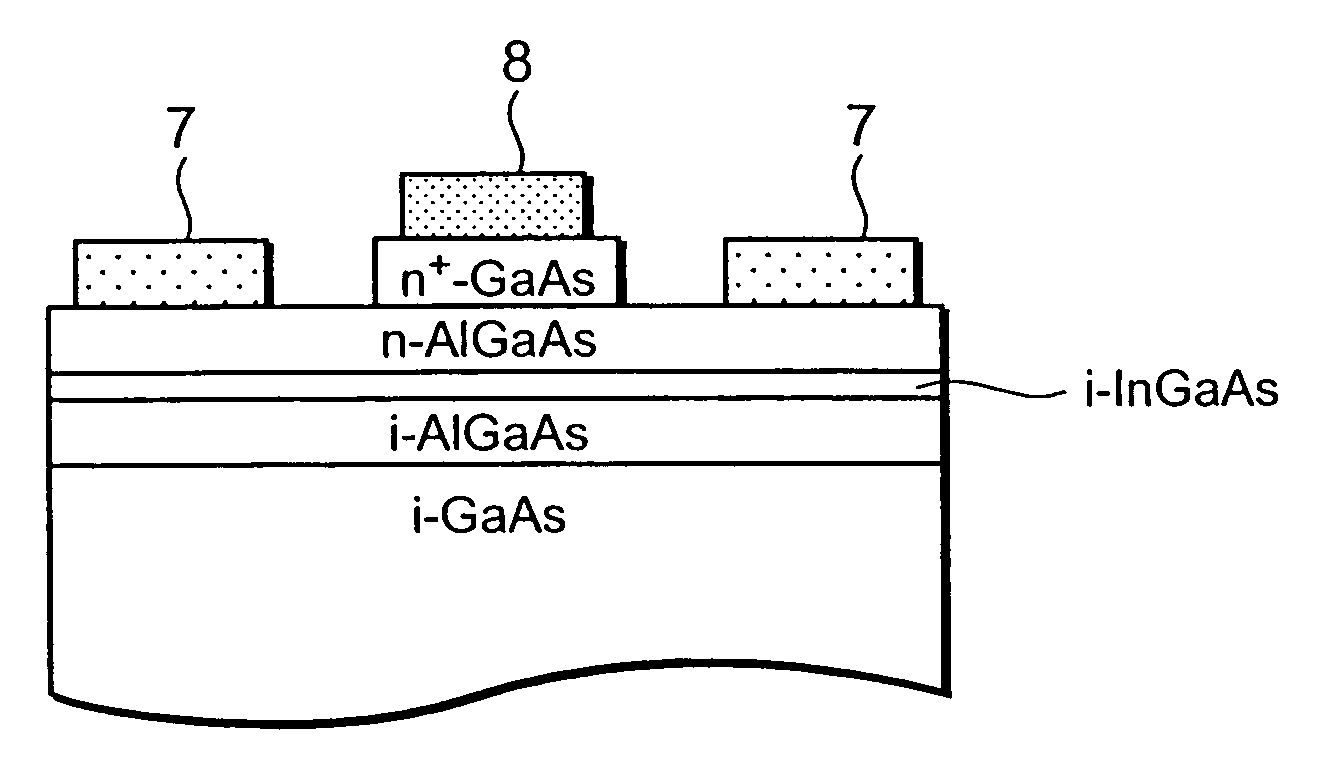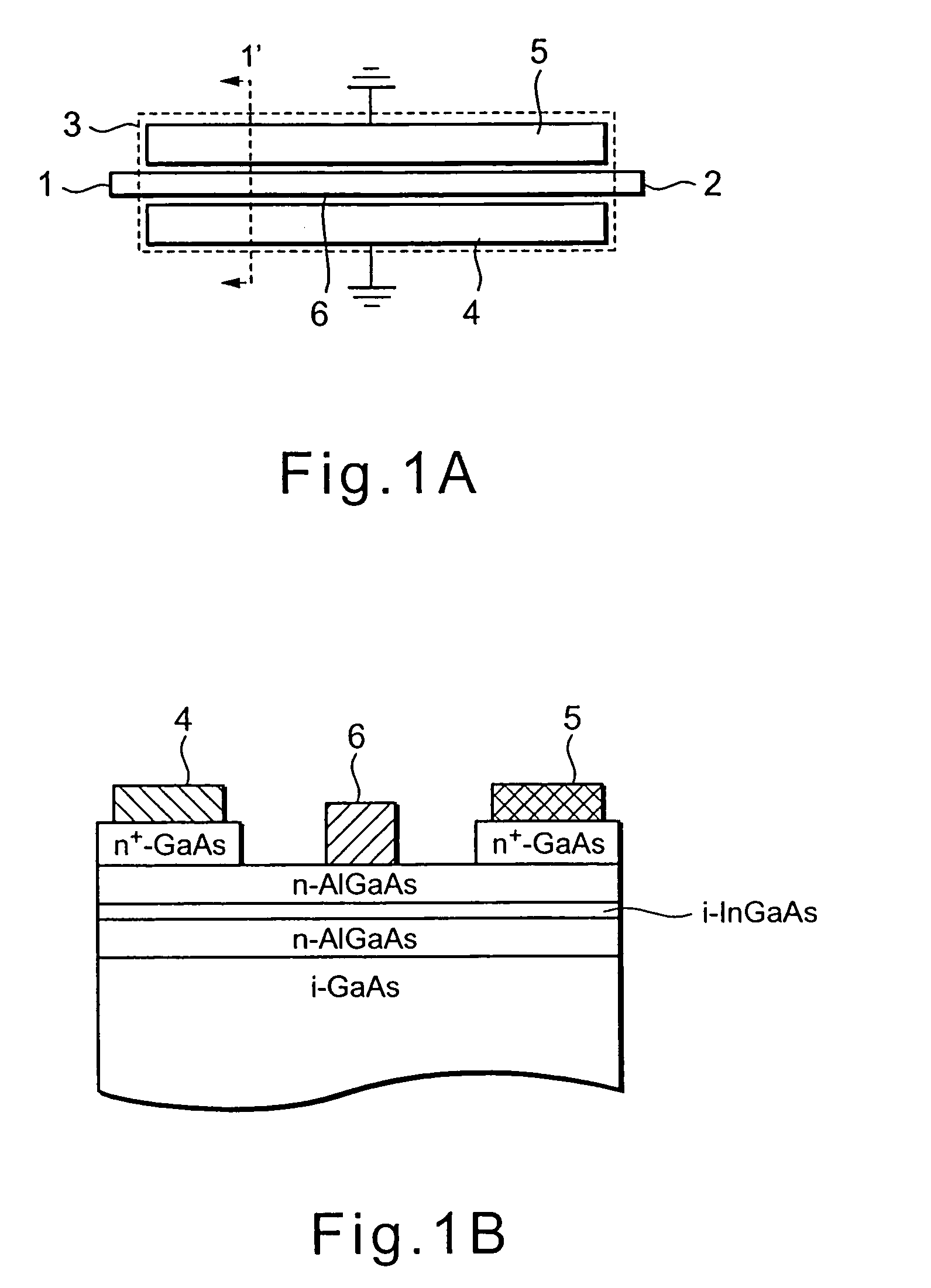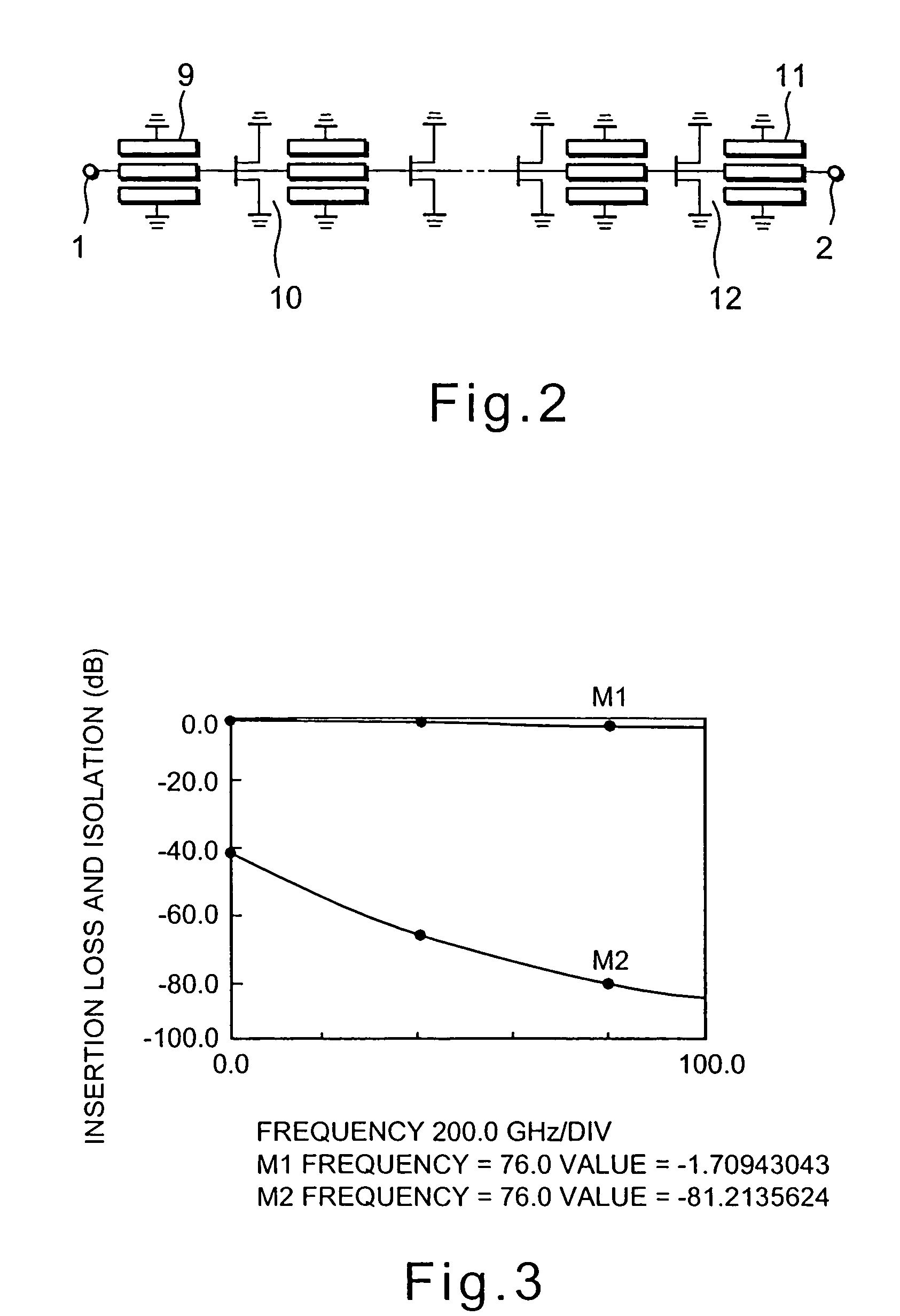Semiconductor switches and switching circuits for microwave
a technology of switching circuits and switches, applied in the field of microwave-based switches, can solve the problems of reducing yield, increasing loss due to reflection, and practicably difficult to maintain low insertion loss, and achieve high isolation. , the effect of reducing the resistance “r”
- Summary
- Abstract
- Description
- Claims
- Application Information
AI Technical Summary
Benefits of technology
Problems solved by technology
Method used
Image
Examples
first embodiment
[0067]In the present example, a heterojunction FET of AlGaAs and InGaAs systems was used as the FET in the above-described In detail, referring to FIG. 1B, a n-AlGaAs layer is formed on an i-GaAs layer. An i-InGaAs layer as a channel layer is formed on the n-AlGaAs layer. A n-AlGaAs layer is formed on the i-InGaAs layer. 2 n+-GaAs layers are formed on the n-AlGaAs layer apart from each other. The gate electrode 6 is formed on the n-AlGaAs layer between the n+-GaAs layers. The gate electrode 6 is made by aluminum, gold, molybdenum, titanium, or tungsten silicide. The source electrode 4 is formed on one of the n+-GaAs layer. The drain electrode 5 is formed on the other of the n+-GaAs layer. The source and drain electrodes are made by an alloy including AuGe or nickel. In addition, the area of the gate electrode 6 was set to 2×400 μm, and the distances between the gate electrode 6 and the source electrode 4 or the drain electrode 5 were set to 2.5 μm. Moreover, the first input-output ...
third embodiment
[0086]FIG. 11 is a graph showing frequency characteristics on insertion loss as well as isolation of the semiconductor switch according to the other example in correspondence with the In the present example, the area of the anode electrode 7 was set to 10×400 vm, and the distance between the cathode electrode 8 and the anode electrode 7 was set to 2.5 μm. In addition, the first input-output terminal 1 and the second input-output terminal 2 are respectively connected with both the ends of the anode electrode 7, and further, 50 Ω loads are respectively connected with the first input-output terminal 1 and the second input-output terminal 2. Capacitance with zero bias between the cathode and the anode is 20 fF per 100 μm, and on the other hand, resistance with forward bias is 3.3 Ω per 100 μm. In addition, entire length of the coplanar line is 400 μm.
[0087]In the semiconductor switch according to the present example comprising such configuration, unlike the foregoing example, the case ...
PUM
 Login to view more
Login to view more Abstract
Description
Claims
Application Information
 Login to view more
Login to view more - R&D Engineer
- R&D Manager
- IP Professional
- Industry Leading Data Capabilities
- Powerful AI technology
- Patent DNA Extraction
Browse by: Latest US Patents, China's latest patents, Technical Efficacy Thesaurus, Application Domain, Technology Topic.
© 2024 PatSnap. All rights reserved.Legal|Privacy policy|Modern Slavery Act Transparency Statement|Sitemap



